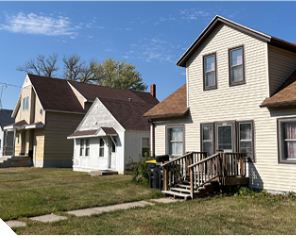Addressing Housing Requires a Multidisciplinary Approach
By Robin Caufman and Mojra Hauenstein

Minnesota cities encounter unique difficulties in meeting housing demands, attracting developers, providing housing for workers, and adapting housing stock as communities age. As a result, a one-size-fits-all approach does not work. The source of these challenges is complex and varied — a city with an aging population and inadequate supply of senior housing looks vastly different than a younger community with growing families.
Start with data
Understanding your community is imperative to addressing the housing issue and residents’ overall needs. It involves identifying where the community has been, where it is today, and where it will be in the future. Analyzing quantitative data such as demographics, existing housing stock, and the local economy will help communities identify the amount, type, and cost of housing to focus on.
- Demographics such as age distribution, family size, and income level indicate the types of housing a community needs.
- Economic data provides insight into the cost and types of housing needed to attract a workforce to support businesses.
- Population forecasts help a city plan for the type of housing that will be in demand in the future.
In addition to quantitative data, qualitative data should be collected by surveying residents and employers on what kind of housing they want and need, and why. Reach out to area nonprofits, faith-based organizations, and social services to ask what they are seeing as housing needs in the community. Qualitative data gives you the story behind the reasoning, which quantitative data cannot tell you by numbers alone.
What does the data tell you?
Many communities focus on new single-family homes as people aspire to achieve the “American Dream” of owning their own home. However, this may not align with what residents need or can afford. By calculating the average home value a household can afford and comparing it to the cost of a new home being built, communities can determine if single-family housing matches what residents can afford.
If the average family cannot afford a new single-family home, consider other types of housing such as townhomes, condominiums, and apartments, and evaluate whether you have land appropriately zoned to accommodate the type of development your community needs.
Bring in the engineers and architects
One of the factors making new housing so expensive is the high cost of new roads and infrastructure. Engineers can be part of the solution by identifying areas of the city that are already well served by utilities and infrastructure. For example, is there an oversized parking lot or tired shopping center that could accommodate higher density, infill, or redevelopment with a housing component? Adaptive reuse of vacant or underutilized buildings shouldn’t be written off either. Could an old school, church, or office building be renovated or redesigned to convert to housing?
Making it real: Winnebago housing study
The City of Winnebago conducted a housing study to better understand housing needs in its community. The study emphasized the importance of aligning housing strategies with data, community input, and builder insights. New building permits in the city declined to new lows in 2022. By comparing the community’s demographics with new single-family homes, the mismatch was exposed between what the average household could afford and the cost of building new homes. However, it also showed the average household can likely afford an existing home. The housing study determined the city needs to use a variety of strategies to attract developers and build a balanced mix of housing over the next five years, such as:
- Encouraging development in existing, vacant, or infill lots.
- Building entry-level, mid-income, and market rate housing.
- Supporting rental housing for the 20-34 age group with rent levels that align with incomes.
- Partnering with employers to build workforce housing.
- Building specialty and accessible rental housing for the 30% of residents with disabilities.
It takes a village to build a village
The lack of housing impacts many aspects of a community. As a result, there is potential for many partners to help address the challenges. For example, employers may be challenged in attracting employees so they may be willing to provide financial support, resources, or political capital. Nonprofits, financial institutions, and faith-based organizations may also be interested in being part of the solution to fulfill their mission. Bring these diverse parties together to identify common goals, develop a shared vision and plan, and pool resources toward building much-needed housing. By working together, the city, developers, employers, and other stakeholders can address a community’s unique housing needs.
Robin Caufman is a senior planner at Bolton & Menk and Mojra Hauenstein is an architect and senior planner at Bolton & Menk (bolton-menk.com). Bolton & Menk is a member of the League’s Business Leadership Council (lmc.org/sponsors).

